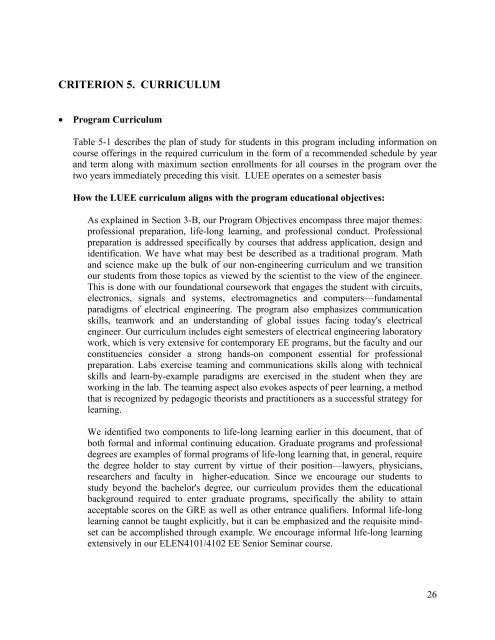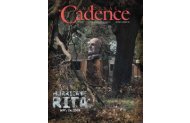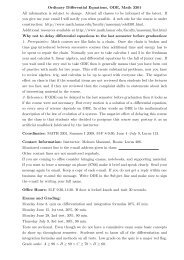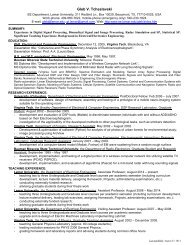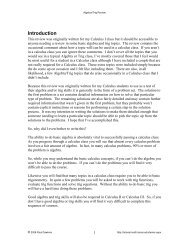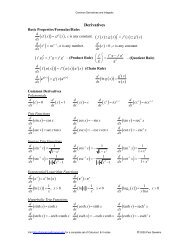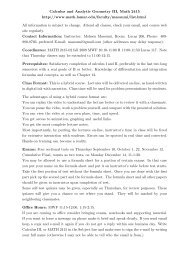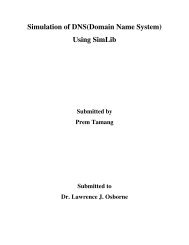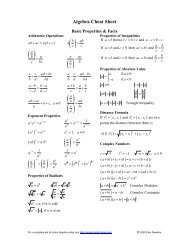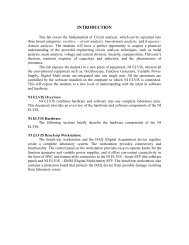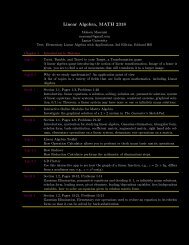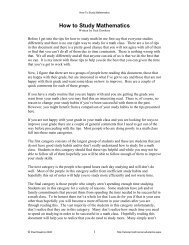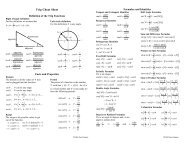LUEE 2012 Self-Study Report (PDF) - Lamar University Electrical ...
LUEE 2012 Self-Study Report (PDF) - Lamar University Electrical ...
LUEE 2012 Self-Study Report (PDF) - Lamar University Electrical ...
Create successful ePaper yourself
Turn your PDF publications into a flip-book with our unique Google optimized e-Paper software.
CRITERION 5. CURRICULUM• Program CurriculumTable 5-1 describes the plan of study for students in this program including information oncourse offerings in the required curriculum in the form of a recommended schedule by yearand term along with maximum section enrollments for all courses in the program over thetwo years immediately preceding this visit. <strong>LUEE</strong> operates on a semester basisHow the <strong>LUEE</strong> curriculum aligns with the program educational objectives:As explained in Section 3-B, our Program Objectives encompass three major themes:professional preparation, life-long learning, and professional conduct. Professionalpreparation is addressed specifically by courses that address application, design andidentification. We have what may best be described as a traditional program. Mathand science make up the bulk of our non-engineering curriculum and we transitionour students from those topics as viewed by the scientist to the view of the engineer.This is done with our foundational coursework that engages the student with circuits,electronics, signals and systems, electromagnetics and computers—fundamentalparadigms of electrical engineering. The program also emphasizes communicationskills, teamwork and an understanding of global issues facing today's electricalengineer. Our curriculum includes eight semesters of electrical engineering laboratorywork, which is very extensive for contemporary EE programs, but the faculty and ourconstituencies consider a strong hands-on component essential for professionalpreparation. Labs exercise teaming and communications skills along with technicalskills and learn-by-example paradigms are exercised in the student when they areworking in the lab. The teaming aspect also evokes aspects of peer learning, a methodthat is recognized by pedagogic theorists and practitioners as a successful strategy forlearning.We identified two components to life-long learning earlier in this document, that ofboth formal and informal continuing education. Graduate programs and professionaldegrees are examples of formal programs of life-long learning that, in general, requirethe degree holder to stay current by virtue of their position—lawyers, physicians,researchers and faculty in higher-education. Since we encourage our students tostudy beyond the bachelor's degree, our curriculum provides them the educationalbackground required to enter graduate programs, specifically the ability to attainacceptable scores on the GRE as well as other entrance qualifiers. Informal life-longlearning cannot be taught explicitly, but it can be emphasized and the requisite mindsetcan be accomplished through example. We encourage informal life-long learningextensively in our ELEN4101/4102 EE Senior Seminar course.26


